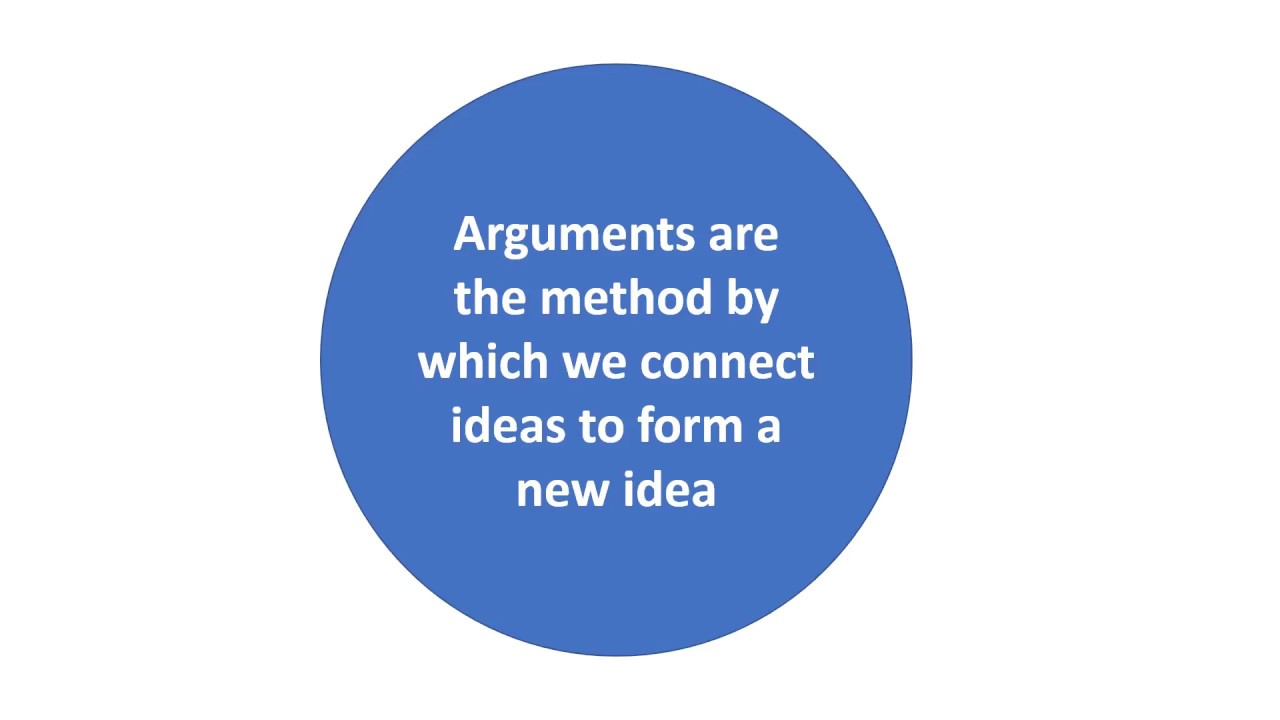Lesson 2: Arguments
What you’ll learn in this lesson:
- The definition of an argument
- The components of arguments
- An introduction to truth value
As we learned in the first lesson, logic is the science that helps us reason better. It provides us with some rules we can use to understand how ideas ought to be related to one another. These rules are called arguments in logic and we’re going to look more closely at them in this lesson. We can modify our definition of logic slightly by using the language of logician Patrick Hurley and say that logic helps us determine good arguments from bad arguments.
What is an argument?
We’ve all gotten into arguments and some of them may have been heated and filled with emotion or they may have been a calm examination of evidence with the hopes of coming to some sort of an agreement. These types of arguments may be very unorganized with each person bringing up various bits of evidence or simply making wild claims by raising their voice or calling others names in hopes of getting them to agree. Regardless of the type of arguments you’ve had (assuming the "argument" isn’t just name-calling or banter), you may have noticed they all have a common goal: the person with whom you’re arguing is trying to convince you that something is true and you’re trying to convince them.
While logical arguments differ from these common conversations we have in important ways, the goal is exactly the same: as we saw in Lesson 1 of this series, when someone makes a logical argument, they are trying to convince you that something is true. But in logic, arguments have a very specific structure and provide a framework for the claims we make (or that we read or hear others making). Using the rules of logic, we can learn to shape our conversations so they’re less messy and instead, are focused on what is important.
A logical argument consists of: reasons, called premises offered in support of a claim called a conclusion.
If you look closely, you’ll see that this definition has three parts:
- Premises: These are the reasons or evidence given that should help convince you of the truth of the . . .
- Conclusion: This usually is the last claim of the argument and is followed by "therefore". It’s the claim that is derived from by the premises (and the new idea the person making the argument wants you to believe). Put another way, the conclusion is the concept that you come to believe if you accept the premises as true.
- Logical relation: the aspect of an argument that "connects" the premises to the conclusion. This can also be called the "in support of" relation to be consistent with our definition.
All arguments in logic have these three components and in future lessons, you’ll learn how to both build arguments and analyze the arguments of others. But first let’s look at some examples.
Arguments, good and bad
Suppose someone made these claims:
Premise 1: Objects fall to the earth in a vacuum at 9.8 meters per second squared (9.8 m/s2)
Premise 2: Water is made up of hydrogen and oxygen molecules
Conclusion: Therefore we should go shopping today
It should be obvious that as an argument, this doesn’t work. We have two premises that make a claim that appear to be true and a conclusion that is supposed to follow from the premises. But something has gone wrong. What does this "argument" lack? It has no logical relation—nothing that connects the premises to each other and the premises to the conclusion. In fact this isn’t an argument at all but just a group of sentences made to look like an argument.
What about this:
- Objects fall to the earth in a vacuum at 9.8 m/s2
- I just dropped this object into a vacuum
- Therefore, the object is falling at a rate of 9.8 m/s2
That seems better, doesn’t it? We have similar terms throughout the argument and the premises do seem to relate to the conclusion. In fact if we assume the premises are true (and in logic it’s okay to make this assumption to help us figure out if the structure is a good one – something we’ll learn more about later), we can’t help but believe that the conclusion is true. That’s the power of a logical argument!
One question that may have come to mind is what to think of the argument if you don’t believe the truth of the premises. That’s a good question and one we’ll have to tackle later. Truth is important when analyzing arguments but for now we’re just looking at the structure of the arguments. We’ll talk about truth in a future lesson.
To further illustrate how arguments work, watch this short video that explains the concepts above in a different way. Don’t worry if you don’t understand all the concepts presented here. We’ll be covering the specifics in future lessons. In the next lesson, we’ll begin digging into how logical arguments are constructed.

Copyright© Philosophy News





